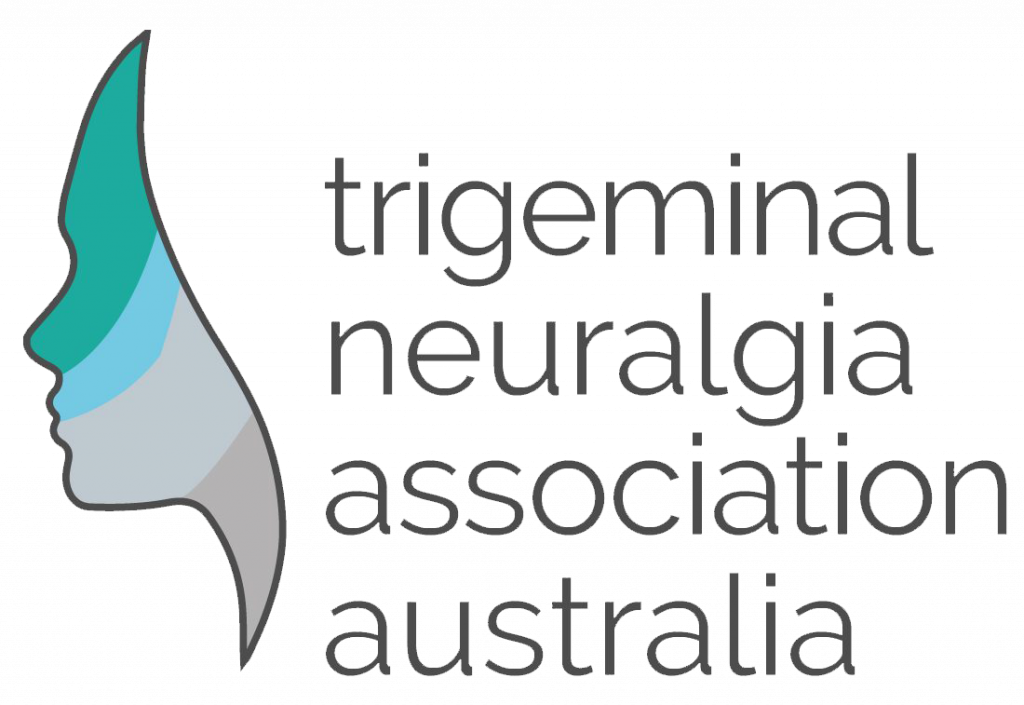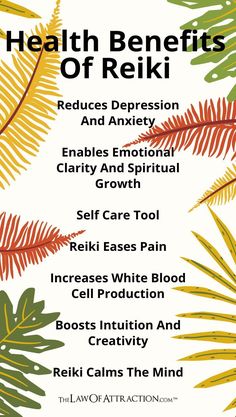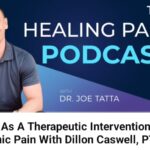Can Reiki Help Your Chronic Pain? We are constantly looking for therapies which can help our community living with trigeminal neuralgia manage pain.
Reiki is a Japanese form of energy healing, a type of alternative medicine. Reiki practitioners use a technique called palm healing or hands-on healing through which a “universal energy” is said to be transferred through the palms of the practitioner to the patient in order to encourage emotional or physical healing
This ‘energy transfer technique’ may help to ease chronic pain when used as a complementary therapy.

Chronic pain not only limits a person’s ability to work and enjoy leisure time, it’s also linked with anxiety, depression, and other health problems. Experts estimate that as many as one in five people live with chronic pain, which is defined as pain on most days lasting six months or longer, according to the Centers for Disease Control and Prevention (CDC).
More and more people are choosing complementary health approaches such as acupuncture, massage, and Reiki to help manage pain. Complementary medicine usually refers to treatments that fall outside traditional Western medical care and are used alongside more conventional medical treatments.
A typical Reiki session is intended to guide energy throughout the body to encourage self-healing, and begins at the head or feet with light touch or even no touch, with the practitioner’s hands a few inches above the client’s body, according to the International Association of Reiki Professionals.
“Nobody knows exactly why it works, but it can be beneficial to people,” says Martay. “How effective it is is up to the patient. In my opinion, the patient is the healer; as practitioners, we can only offer treatment and see what comes out of it,” he says. While the clinical research evidence on efficacy is variable, Reiki is considered safe and has not been found to have adverse effects, according to the University of Minnesota’s Earl E. Bakken Center for Spirituality and Healing in Minneapolis.
How Can Reiki Address Chronic Pain?
Reiki can be used as a complementary therapy to treat different kinds of pain, including chronic pain, says Martha Lacy, MD, a hematologist at Mayo Clinic in Rochester, Minnesota, and a Reiki master. “I wouldn’t recommend Reiki instead of Western medicine, but I think it could be used as an adjunct or a complement to those therapies,” says Dr. Lacy.
“Chronic pain is a complicated issue. There is the anatomical physical aspect and then there is the emotional one,” says Martay. Of the five pain centers located in the brain, two of them are located in the limbic system of the brain, he says. “The limbic system is where emotions are processed, and that makes a tight connection between pain and emotions,” says Martay. Reiki can potentially address that aspect of chronic pain for some people, he says.
Reiki can’t be used to change what is basically an anatomical problem, says Martay. “For example, if somebody has chronic back pain and we look at the MRI and see that there is an eroded disc — there’s an anatomical problem; you can’t improve or change that aspect with Reiki. Reiki works more on the emotional level by calming people down,” he says.
Studying Reiki Proves Challenging for Researchers
Although there isn’t an abundance of studies to show Reiki’s impact on chronic pain, that doesn’t necessarily mean that it isn’t effective; the dearth of evidence could also be due, at least in part, to the difficulty in recruiting people and executing studies for the therapy.
To prove the benefits of Reiki in a randomized controlled clinical trial, researchers need to include an arm where “sham” Reiki is performed. Sham Reiki is typically performed by an actor or a person who isn’t trained in Reiki and doesn’t believe in the concept of biofield energy, that there is a field of vibrational energy surrounding and affecting the body.
Recruiting enough participants for these trials can be challenging, according to the authors of a Reiki meta-analysis published in December 2014 in Pain Management Nursing. It took some studies up to two years to gather just 24 subjects because participants refused to be in the trial unless they could be placed in the Reiki group rather than the sham group.
The meta-analysis did find that although the number of studies is limited, there is evidence to suggest that Reiki may be effective for pain and anxiety. The authors believed that there might have been improved findings if trials had lasted longer — some studies lasted less than a week.
Is There Evidence for Using Reiki in Treating Chronic Pain?
Authors of a review published in October 2017 in the Journal of Evidence-Based Complementary and Alternative Medicine see below speculate that Reiki may trigger the vagus nerve to activate the parasympathetic nervous system, which controls mood, digestion, heart rate, and even the perception of pain.
The authors of that review analyzed two studies that looked at Reiki as an adjunct treatment to help with acute or chronic conditions and concluded that there was “strong evidence for Reiki being more effective than placebo, suggesting that Reiki attunement leads to a quantifiable increase in healing ability.”
In Martay’s experience, there are times when Reiki can be effective, not necessarily in the ways the patient was seeking, but rather where the patient’s body felt that it was needed. “We had a woman come in with severe arthritis in her knees. The patient was in physical rehabilitation and came to Reiki sessions, but her knees didn’t improve. However, she had suffered from constipation for many years and that disappeared. The patient attributed that improvement, at least in part, to Reiki,” says Martay. In Reiki, the body may take the energy to another part of itself other than where you intended it to go, he adds.
Can Reiki Help With Neuropathy Pain?
Research is limited on Reiki’s benefits for neuropathy, the nerve damage that can result from diabetes among other causes. A study published in Diabetes Care compared Reiki, sham Reiki, and usual care for people with painful diabetic neuropathy. Investigators found that after 12 weeks of treatments there was no difference in the perception of pain or improvements in walking distance between the groups that received real Reiki and sham Reiki.
Reiki can sometimes provide pain relief in neuropathy, though how long that relief lasts may vary from person to person, says Martay. “Often when people try a therapy like Reiki they have usually gone through a plethora of orthodox medicine, and this may be their last hope,” he says. “I’ve seen people who this has helped, and they were happy with the incremental benefits,” he says.
How to Prepare for a Reiki Session
If you decide to try Reiki, wear loose-fitting and comfortable clothes to your first session; you’ll remain fully clothed throughout the process. In most cases, you will be semi- or fully reclined on a massage table.
Martay suggests that the best preparation for your first Reiki session is none at all. “Come completely unprepared, because then you have no expectations,” he says. “The first session is often the most successful one for the patient for this very reason; whatever happens, happens. Sometimes it’s best to have no preconceived ideas, then there are no barriers in the way.”

Reiki Is Better Than Placebo and Has Broad Potential as a Complementary Health Therapy
Abstract
This study reviews the available clinical studies of Reiki to determine whether there is evidence for Reiki providing more than just a placebo effect. The available English-language literature of Reiki was reviewed, specifically for peer-reviewed clinical studies with more than 20 participants in the Reiki treatment arm, controlling for a placebo effect. Of the 13 suitable studies, 8 demonstrated Reiki being more effective than placebo, 4 found no difference but had questionable statistical resolving power, and only one provided clear evidence for not providing benefit. Viewed collectively, these studies provide reasonably strong support for Reiki being more effective than placebo. From the information currently available, Reiki is a safe and gentle “complementary” therapy that activates the parasympathetic nervous system to heal body and mind. It has potential for broader use in management of chronic health conditions, and possibly in postoperative recovery. Research is needed to optimize the delivery of Reiki.
Reiki is one of the more popular complementary modalities used by Australians to manage their health conditions,1 There is little data available on how widely Reiki is used in Australia, but information gleaned from public sources indicates that it is being employed with good effect in some hospitals, cancer support centers, drug and alcohol rehabilitation centers, and in palliative care. At the Oncology-Haematology Unit at Bega Valley Health Services, Reiki sessions are provided by Jennifer Ahrens, who reported,
Patients and carer responses noticeably referred to their fear and anxiety during a time of diagnosis of cancer and follow-up treatments. Most patients are grateful that the hospital provides this service, which they report as bringing diverse benefits, particularly on an emotional level and one that is personally supportive as they negotiate a stressful and traumatic period with less fear, anxiety or depression.2(p19)
Reiki is not an alternative to allopathic medicine—it is a “complementary” therapy that can be implemented alongside all other medical and therapeutic techniques. It is a gentle technique that is suitable for even very fragile patients, so it is accepted widely in hospitals and hospices around the world. The profound relaxation produced by Reiki has been anecdotally reported to alleviate anxiety and stress, the perception of pain, and to promote a feeling of psycho-spiritual well-being.3
Reiki was developed by Mikao Usui in Japan in the 1920s. It is a relaxing form of healing therapy that is applied through noninvasive, non-manipulative gentle touch. Reiki involves lightly laying of hands just above or on the clothed body, working over the front and back in a slow progression of hand positions. Reiki has no religious doctrine and is accepted by people from all backgrounds and belief systems.
One of the key defining features of Reiki is that the ability to practice is conferred through an “attunement” process and is not dependent on any innate personal healing capability. Attunement is done by a Reiki master, through a series of rituals that are said to open the energy channels of the body. Attunement to first-degree Reiki (Reiki I) confers the ability to treat oneself and others by touch. Attunement to second-degree Reiki (Reiki II) confers the ability to use specific symbols to access Reiki mentally for distant healing. Attunement to third-degree Reiki (Reiki III), or master level, confers the ability to attune others into Reiki. At each level, the ability to effectively heal with Reiki develops progressively through committed practice.4
Understandably, the ability to confer special healing abilities through an attunement ritual is regarded with skepticism by many people. It could be argued that any health benefits of Reiki are nothing more than a placebo effect and that the same benefits could be achieved without attunement.
Reviews of Reiki clinical trials have been published by Lee et al,5 vanderVaart et al,6 and by Baldwin et al.7 In summary, these reviewers found that Reiki had some promise in the areas of pain, relaxation, and anxiety management, but there was a need for further experiments with greater numbers of subjects to allow statistically meaningful interpretation.
In recent years, there have been many new publications on Reiki trials, but these have not been subject to review. The present study was undertaken to review the available clinical studies of Reiki to determine whether there is evidence for Reiki providing more than just a placebo effect.
Methods
Four selection criteria were applied to Reiki studies for inclusion in this review. First, only studies of hands-on Reiki were considered. While distance healing is considered to be a valid Reiki technique, there are currently too few published studies to draw statistical conclusions.
Second, only quantitative studies including a “sham Reiki” placebo control were considered. Sham Reiki involves an actor mimicking the hand positions and other procedures used by the attuned Reiki practitioner. It is intended to serve as a placebo control, in which the only significant experimental variable is whether or not the practitioner has received a Reiki attunement.
Third, this review only includes reports published in peer-reviewed journals, thereby excluding master’s and PhD theses. The rationale for this is that the methods and results in published articles have survived screening and evaluation by peer review, whereas master’s and PhD theses have not.
Fourth, this review only includes studies involving 20 or more participants in the Reiki treatment arm. A criticism raised in previous reviews is that many studies were flawed by the use of too few experimental subjects, making them incapable of reaching statistically significant conclusions. The inclusion of studies with 20 or more participants helps ensure that the conclusions are statistically robust.
The exception to this criterion is the inclusion of 2 studies that used laboratory rats as experimental recipients of Reiki.8,9 These were rigorously conducted studies that collected “hard” evidence through microscopic tissue examination and implanted telemetric transmitters, with care taken to ensure statistically significant outcomes. These are regarded as highly significant studies because they prelude the possibility of a psychological placebo effect. Even so, a sham Reiki placebo control was used in each study.
Identification of English-language Reiki studies was done by undertaking a Google Scholar search using a variety of key words, repeated over a period of more than 3 months. In addition, the reference lists of identified articles were also scrutinized, to help identify any additional references. Full copies of all identified publications were obtained, to ensure that experimental details were correctly understood. Only the publications meeting all of the selection criteria were included in this review.
Results
There were 13 peer-reviewed studies published between 1998 and 2016 that met all of the selection criteria. There were 4 randomized single-blind studies and 7 randomized double-blind studies with human participants, and 2 studies using rats. The studies included both pilot studies and clinical trials, looking at both short-term and long-term application of Reiki.
To assist in the interpretation of these data, the selected studies can be grouped into 4 categories:
-
Physiological responses to Reiki
-
Use of Reiki as a complementary therapy for a chronic condition
-
Use of Reiki as a treatment for a chronic condition
-
Use of Reiki as a complementary therapy for an acute condition
Physiological Responses to Reiki
Witte and Dundes10 conducted a randomized, placebo-controlled pilot study using university student volunteers to measure objectively the effect of Reiki on physical and mental relaxation. Reiki was provided by a Reiki I practitioner over a period of 20 minutes, involving 4 hand positions on head, neck, and upper torso of a seated participant. Four treatment arms were used, each with 25 participants: Reiki, sham Reiki placebo, a control group relaxing and listening to a meditation tape, and a control group listening to calming music. It was found that Reiki was more effective than placebo, music, or meditation for inducing physical relaxation, but there was no difference between groups for mental relaxation.
Baldwin and Schwartz8 investigated whether application of Reiki could reduce the deleterious effects of noise-induced stress in rats. Loud noise can cause damage to the tiny blood vessels in the mesentery of rats, so the extent of microvascular damage can provide a quantitative measure of the level of stress experienced by the animals. The experiments involved 3 treatment arms: (1) noise + Reiki (n = 4), (2) noise + sham Reiki (n = 4), and (3) noise-only control (n = 4). Reiki or sham Reiki were provided to the caged rats for 15 minutes per day over 21 days. The experiment was replicated 3 times, and then again using different Reiki practitioners. It was found that the extent of stress-associated microvascular damage for noise + Reiki was significantly less than that for noise + sham Reiki or the noise-only control.
Baldwin et al9 extended their earlier study to investigate whether Reiki can reduce the heart rate and blood pressure of noise-stressed rats. The rats were fitted with implantable telemetric transmitters to provide accurate physiological data. The same procedure was used as before, with 3 rats in each treatment arm and Reiki or sham Reiki provided for 15 minutes per day over 5 days. It was found that Reiki, but not sham Reiki, significantly reduced both the average resting heart rate and the rise in heart rate produced by exposure of rats to loud noise. However, neither Reiki nor sham Reiki significantly affected mean arterial pressure.
Díaz-Rodríguez et al11 employed a randomized, single-blind, placebo controlled, crossover design pilot study to investigate the physiological effects of Reiki in health care professionals with burnout syndrome. The study involved 21 participants receiving either Reiki or sham Reiki placebo, with heart rate variability, body temperature, salivary flow rate, and salivary cortisol levels measured both pre- and posttreatment. Reiki was provided by a practitioner with 15 years of experience, involving a 30-minute session covering the head, eyes, ears, and chest. It was found that a single session of Reiki increased heart rate variability and body temperature but not salivary cortisol levels, indicating that Reiki shifts the autonomic balance toward parasympathetic dominance.
Salles et al12 investigated the effect of Reiki on abnormal blood pressure using a randomized, cross-sectional, descriptive, and double-blind clinical trial. Hypertensive patients were randomized to 1 of 3 treatment arms: (1) Reiki (n = 22), (2) sham Reiki placebo (n = 22), or (3) rest control (n = 22). Reiki was provided as a single 20-minute session (no details provided). It was observed that blood pressure decreased in each of the 3 groups, with statistically significant differences between each group. The Reiki group had the greatest reduction in blood pressure, followed by the placebo and the control group.
All 5 of these studies provide evidence that Reiki is better than placebo for inducing a physically relaxed state. This appears to be an objective fact, given that it has been replicated in both humans10 and rats.8 Physiological measurements indicate that Reiki is more effective than placebo in reducing resting heart rate,9 increasing heart rate variability,11 and reducing blood pressure.12 These results indicate that Reiki is more effective than placebo in activating the parasympathetic nervous system.
Reiki as a Complementary Therapy for Chronic Conditions
Dressen and Singg13 investigated the potential benefits of Reiki for patients with a variety of chronic illnesses. This randomized, single-blind, placebo controlled pilot study involved 4 treatment arms: (1) Reiki (n = 30), (2) sham Reiki placebo (n = 30), (3) progressive muscle relaxation (n = 30), and (4) rest control (n = 30). Reiki was provided by 4 Reiki masters as 30-minute sessions covering the full body of a recumbent participant, given 2 times per week for 5 weeks. It was found that Reiki was more effective than the other treatments for reducing pain, depression, and state anxiety in chronically ill patients. Reiki was also found to cause desirable changes in personality, including reduced trait anxiety, enhancement of self-esteem, a shift toward internal locus of control, and toward a realistic sense of personal control.
Catlin and Taylor-Ford14 investigated whether provision of Reiki therapy during outpatient chemotherapy is associated with increased comfort and well-being. This was a double-blind, randomized clinical controlled trial with 3 treatment arms: (1) Reiki (n = 63), (2) sham Reiki placebo (n = 63), and (3) standard care (n = 63). A Reiki master nurse provided a single Reiki session of 20 minutes duration (no details provided). It was found that participants in both the Reiki and sham Reiki placebo groups showed improvement in pre- and postcomfort and well-being outcomes, while those in the standard care groups showed no differences in well-being or comfort. The researchers concluded that Reiki was no better than sham Reiki and that the attentive presence of a designated nurse at the bedside was more important for patient well-being and comfort than the delivery of Reiki.
Erdogan and Cinar15 evaluated the effect of Reiki on depression in elderly persons living in nursing homes using a randomized, single-blinded pilot study with 3 treatment arms: (1) Reiki (n = 30), (2) sham Reiki placebo (n = 30), and (3) control (n = 30). Reiki was applied to the experimental group by a Reiki master for 8 weeks, once a week for 45 to 60 minutes. Sham Reiki was applied by 4 nurses who did not have Reiki training but thought that they were practicing Reiki. The control group had no intervention. The researchers observed a statistically significant decrease in depression levels for the Reiki group on the 4th, 8th, and 12th weeks. No significant decrease in depression scores were found for the sham Reiki or control groups. There was no significant difference in the depression scores between the sham reiki and control groups. This study indicated that Reiki might be effective for reducing depression in elderly persons living in nursing homes.
Alarcão and Fonseca16 employed a randomized, double-blinded, placebo-controlled study with a cross-sectional design to investigate the effects of Reiki on the quality of life of blood cancer patients. The study involved 2 treatment groups: (1) Reiki (n = 58) and (2) sham Reiki placebo (n = 42). Reiki (by Reiki masters) or sham Reiki treatment was provided in 60-minute sessions, twice a week for 4 weeks. Patient responses were assessed using the WHOQoL-Bref, an abbreviated generic Quality of Life Scale. It was found that the Reiki group showed significantly more improvements in the general, physical, environmental, and social dimensions of the WHOQoL-Bref. They generally felt better about themselves, their physical condition, and their relationships with their environment and other people.
Each of these studies investigated a particular aspect of how Reiki may be employed as a complementary therapy in the management of chronic conditions. In 3 of these 4 studies, Reiki was applied repeatedly over an extended period, with 1 or 2 sessions per week over a period of up to 8 weeks. In these 3 studies, Reiki was found to be more effective than placebo, resulting in reduced anxiety13 and depression,15 and improved self-esteem13 and quality of life.16
Only one of the studies did not find a significant difference between Reiki and placebo.14 Interestingly, this was the only study that utilized Reiki as a one-off, short-duration intervention, to improve patient comfort and well-being during chemotherapy. Interpretation of this study outcome is difficult because the trial did not include a “usual treatment” control, which would have provided insight into the sensitivity of the instruments used to measure “comfort” and “well-being.”
Reiki as an Adjunctive Treatment for Chronic Conditions
Gillespie et al17 investigated the efficacy of Reiki for alleviating pain and for improving mobility and quality of life in patients with type 2 diabetes and painful diabetic neuropathy. This was a randomized, semidouble-blind, placebo-controlled, 12-week clinical trial involving 3 treatment arms: (1) Reiki (n = 93), (2) sham Reiki placebo (n = 88), and (3) usual care control (n = 26). Reiki was provided by 2 experienced practitioners who provided 2 sessions in the first week, followed by weekly sessions over 12 weeks. Patients were recumbent during each 25-minute session. The researchers found that global pain scores and walking distance improved in both the Reiki and placebo groups. However, there were no significant differences between groups at the final visit. The researchers noted that the pain scores were relatively low in all groups, with high variability, which reduced the power to detect a statistically significant difference between treatments.
Assefi et al18 conducted a clinical trial to determine whether Reiki can be beneficial as an adjunctive treatment for fibromyalgia. The trial was factorial designed, randomized, double-blinded, and sham-controlled, with 2 treatment arms: (1) Reiki (n = 25) and (2) sham Reiki placebo (n = 25). Reiki was provided by 3 experienced Reiki masters using two 30-minute sessions weekly for 8 weeks to recumbent participants. The trial results showed that neither of the treatments improved the pain, fatigue, well-being, or physical and mental functioning of patients with fibromyalgia. These researchers concluded that adults with fibromyalgia are unlikely to benefit from Reiki.
Both of these studies evaluated the potential of Reiki to relieve the pain of painful diabetic neuropathy and fibromyalgia, which are difficult conditions to manage with allopathic medicine. In the trial by Gillespie et al,17 both Reiki and placebo showed some promise for relieving the pain of painful diabetic neuropathy, but the experiment did not have sufficient statistical power to detect a significant difference between treatments. In the trial by Assefi et al,18 neither Reiki nor placebo was able to relieve the pain of fibromyalgia or the resulting fatigue and reduced well-being, indicating that Reiki is not a potential cure for this recalcitrant and difficult condition.
Reiki as a Complementary Therapy in Acute Settings
Bourque et al19 undertook a randomized, double-blinded pilot study to determine whether the use of Reiki decreases the amount of analgesics administered to patients undergoing screening colonoscopy. The trial included 3 treatment arms: (1) Reiki (n = 25), (2) sham Reiki placebo (n = 5), and (3) retrospective chart review of prior patients as the control (n = 30). A Reiki master provided a 10-minute Reiki treatment simultaneously with intravenous administration of midazolam (a sedative), prior to the colonoscopic procedure. During colonoscopy, meperidine (an analgesic) was administered to the conscious patient, depending on the level of pain experienced. The trial results indicated no statistically significant difference in meperidine administration between the patients in the control and Reiki groups. The researchers noted that the study would have been enhanced by having a pain scale to determine the amount of meperidine to be administered to the patients. It was observed that patients displayed a calmer demeanor after screening colonoscopy with Reiki.
Kundu et al20 investigated the potential benefits of Reiki as an adjuvant to opioid therapy for postoperative oral pain control in pediatric patients. In this double-blind, randomized clinical trial, children aged 9 months to 4 years who were scheduled for elective dental work or for palatoplasty surgery were randomly assigned to 1 of 2 groups: (1) preoperative Reiki (n = 20) or (2) preoperative sham Reiki control (n = 18). Reiki was provided by a Reiki master for 20 to 30 minutes (details not provided). It was reported that there was no evidence of benefit from a single session of preoperative Reiki in terms of reducing pain intensity, analgesic requirements, incidence of side effects, or perioperative family satisfaction.
In both of these trials, Reiki was not found to be more effective than placebo for reducing acute pain during medical procedures. In both cases, however, it is unclear whether the design of the experiments provided sufficient statistical power to reach a firm conclusion. Bourque et al19 stated that the experiment could have been improved by using a pain scale to help calibrate the amount of analgesic administered. Kundu et al20 used the Face, Legs, Activity, Cry, Consolability (FLACC) pain scale, which is appropriate for determining the dosage of postsurgery analgesic for young children, but its statistical resolving power is not well defined.
Discussion
This review identified 13 placebo-controlled studies of Reiki that included at least 20 participants in the Reiki treatment arm, of which 8 found that Reiki was more effective than placebo.8–13,15,16 There were 4 studies that found no difference between Reiki and placebo, but this could be attributed to a lack of statistical resolving power of the experiments.14,17,19,20 In one study in which Reiki was not better than placebo, involving patients with fibromyalgia,18 neither Reiki nor the placebo had any beneficial effect.
Viewed collectively, these studies provide reasonably strong support for Reiki being more effective than placebo. Two of the studies were conducted with rats and produced clear, objective evidence of a benefit of Reiki over placebo. This suggests that there is some merit to the claim that Reiki “attunement” imparts an extra healing capacity to the recipient. Although there is currently no scientific explanation for this, the clinical trial evidence is compelling. Further research is warranted to better understand this phenomenon.
Reiki has been shown to be better than placebo for inducing a state of relaxation.8,10 Physiologically, this means that Reiki is effective in activating the parasympathetic nervous system, quantitatively measured as reduced heart rate,8 reduced blood pressure,12 and increased heart rate variability.11 The parasympathetic nervous system is one branch of the autonomic nervous system, the other branch being the sympathetic nervous system. In a healthy individual, the activity of the 2 branches can be rapidly modulated in response to changing environmental demands, but overall are maintained in a state of dynamic balance, or homeostasis. This regulatory process is primarily mediated by the parasympathetic nervous system via the vagus nerve.21
It is known that the vagus nerve plays a vital role in mediating the mutual interactions between the brain and the body. According to the neurovisceral integration model,22 the vagus nerve plays a key role in processes that regulate the health of the body, including inflammatory responses, glucose regulation, and hypothalamic-pituitary-adrenal function. In each of these processes, the regulatory role of the vagus nerve is thought to be associated with its function as part of the “inflammatory reflex.”23
According to the polyvagal theory,21 the autonomic nervous system is the neurophysiological substrate for emotional expression and contingent social behavior. The perception of pain, like other emotions, is an affective state that is governed by the autonomic nervous system. Chronic pain is associated with dysregulation of the autonomic nervous system and reduced heart rate variability. Increased heart rate variability indicates a greater capacity of the autonomic nervous system for affect regulation and reduced pain sensitivity.24,25
A compromised autonomic nervous system, as characterized by reduced heart rate variability, is associated with cognitive and affective dysregulation, and psychological inflexibility, which are major psychological risk factors for psychopathologies such as chronic anxiety and depression.26 Conversely, increased heart rate variability is associated with better regulation of emotional responses, better coping strategies, more positive emotions, and increased social connectedness, supporting an “upward spiral” in social and psychological well-being.27,28
Thus, the vagus nerve plays a vital role in mediating both physical and mental health. Artificial stimulation of the parasympathetic nervous system via the vagus nerve has been shown to reduce the perception of pain,29 reduce depression,30 and improve mood and quality of life.31
For patients with chronic health conditions, Reiki has been found to be more effective than placebo for reducing pain and anxiety,13 depression,15 and for improving self-esteem13 and quality of life.16 It seems likely that these effects are the result of Reiki’s ability to activate the parasympathetic nervous system and increase heart rate variability, which can be understood in terms of the neurovisceral integration model22 and the polyvagal theory.21
As a safe and gentle way to activate the parasympathetic nervous system via deep relaxation, Reiki has the potential to provide valuable support for a broad range of chronic health conditions. Research to date does not suggest that Reiki can cure any health condition, so it is not appropriate to regard Reiki as an alternative to allopathic medicine. Instead, Reiki should be regarded as a useful complement to conventional practices, especially for chronic illnesses where the use of drugs offers little benefit.
Previous research has provided evidence to suggest that Reiki may be a useful complementary therapy in acute settings. For example, the effectiveness of Reiki as an aid to recovery after major surgical procedures has been tested in an Indian hospital. Reiki was provided for 7 days after surgical procedures such as laparotomy, gastrectomy, hysterectomy, cholecystectomy, mastectomy, and general abdominal surgeries. Reiki was found to improve the vital signs (temperature, pulse, respiration, blood pressure, and pain), hence the prospects for better recovery and to reduce anxiety and depression.32 Also, Reiki has been found to significantly reduce pain and the need for analgesics following total knee arthroscopy33 and delivery by Caesarean section.34,35 Such results are potentially significant, because it has been shown that high preoperative anxiety and depression and its persistence during the postoperative period leads to a higher morbidity and mortality rate. Reiki could potentially play a complementary role in acute surgical procedures, to reduce the risk and cost of postoperative complications.32
However, in the 2 placebo-controlled trials considered in this review,19,20 Reiki was not found to be more effective than placebo for reducing acute pain during medical procedures. A possible reason for this is that, in these 2 trials, Reiki was provided for a short period (10-30 minutes) prior to the procedure. In contrast, in the trials that reported success, Reiki was provided for a number of days post procedure, that is, for 2,34,35 3,33 or 7 consecutive days.32
No research has been conducted to evaluate the optimum duration of a Reiki session, or the optimum number of sessions that should be provided. Typically, a Reiki practitioner would recommend the use of 3 sessions as a starting point, regarding more Reiki as being better than less. The optimum amount is likely to be different for each condition, and possibly each person, so this could be a significant source of experimental variation that has not yet been taken into account. Since Reiki has been shown to have a significant effect on measurable physiological variables such as heart rate variability, it is recommended that research be undertaken to investigate whether the effect of Reiki on heart rate variability has only a transient or lasting benefit, and whether multiple Reiki sessions over an extended period of time have a cumulative effect.
Conclusion
Reiki is a safe, gentle, and profoundly relaxing healing modality that can be practiced by anyone who has received an “attunement” from a Reiki master. This review has found reasonably strong evidence for Reiki being more effective than placebo, suggesting that Reiki attunement leads to a quantifiable increase in healing ability.
Reiki is better than placebo in activating the parasympathetic nervous system, as measured by reduced heart rate, reduced blood pressure, and increased heart rate variability. For patients with chronic health conditions, Reiki has been found to be more effective than placebo for reducing pain, anxiety, and depression, and for improving self-esteem and quality of life. According to the neuro visceral integration model and the polyvagal theory, these effects are due to higher parasympathetic nervous system activity, mediated via the vagus nerve.
This understanding suggests that Reiki has the potential to provide valuable support for a broad range of chronic health conditions. However, there is no justification to regard Reiki as a cure for any health condition. Instead, Reiki should be regarded as a complementary therapy that can be implemented alongside all other medical and therapeutic techniques.
Further research is recommended to help optimize the application of Reiki for specific health conditions and to examine the benefits arising from provision of multiple Reiki sessions over an extended period of time.
Acknowledgments
The author wishes to acknowledge the guidance and wisdom of his Reiki masters, Elizabeth and Robert Thuan, who are dedicated to professionalizing the practice of Reiki. The author is grateful for the support of fellow members of the committee of management of the Australasian Usui Reiki Association, who are dedicated to letting the love of Reiki shine in the world.
Footnotes
Declaration of Conflicting Interests: The author declared no potential conflicts of interest with respect to the research, authorship, and/or publication of this article.
Funding: The author received no financial support for the research, authorship, and/or publication of this article.
ORCID iD: David E. McManus, PhD http://orcid.org/0000-0002-0041-8365
Ethical Approval: Ethical approval was not needed for the research published in this review article.






